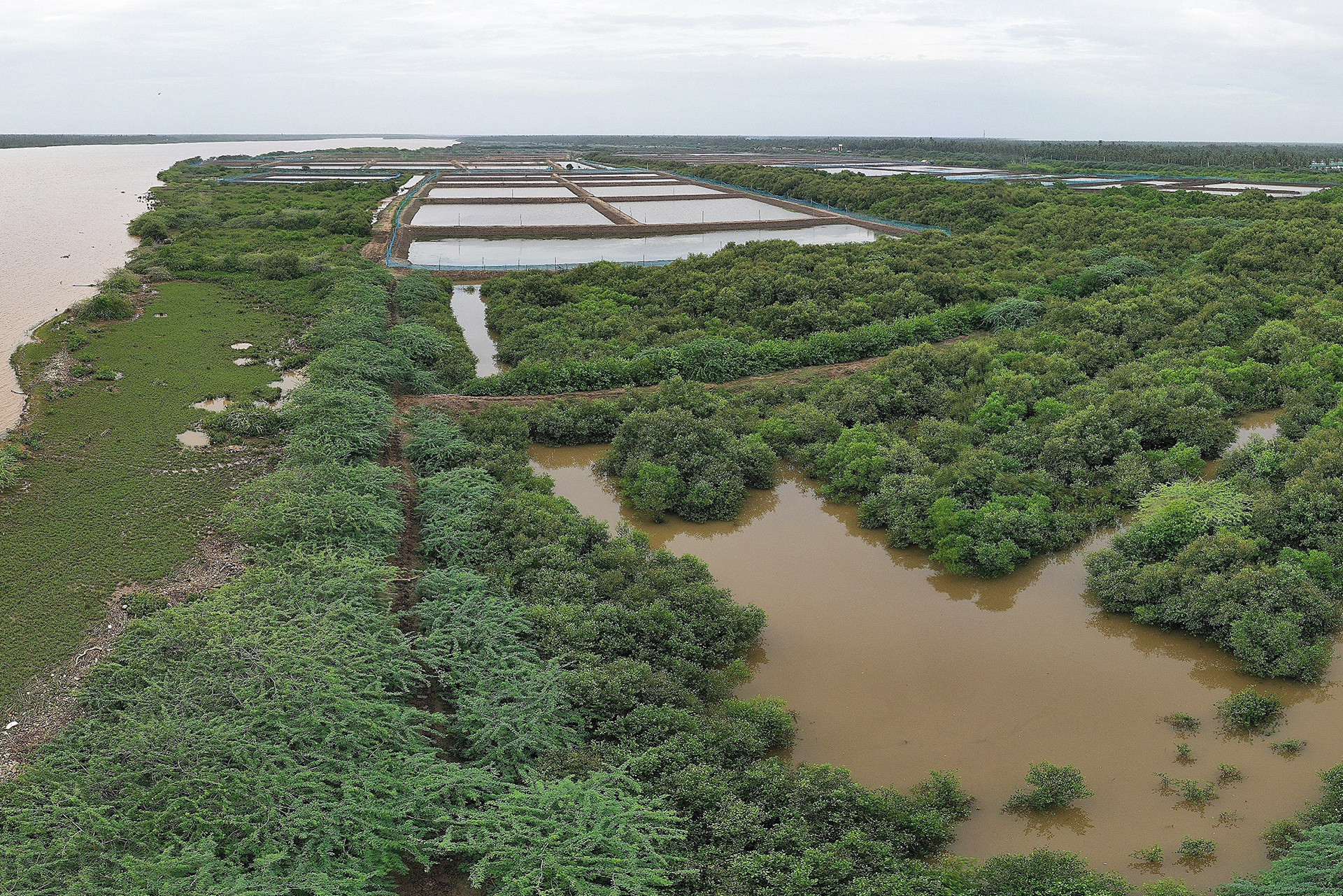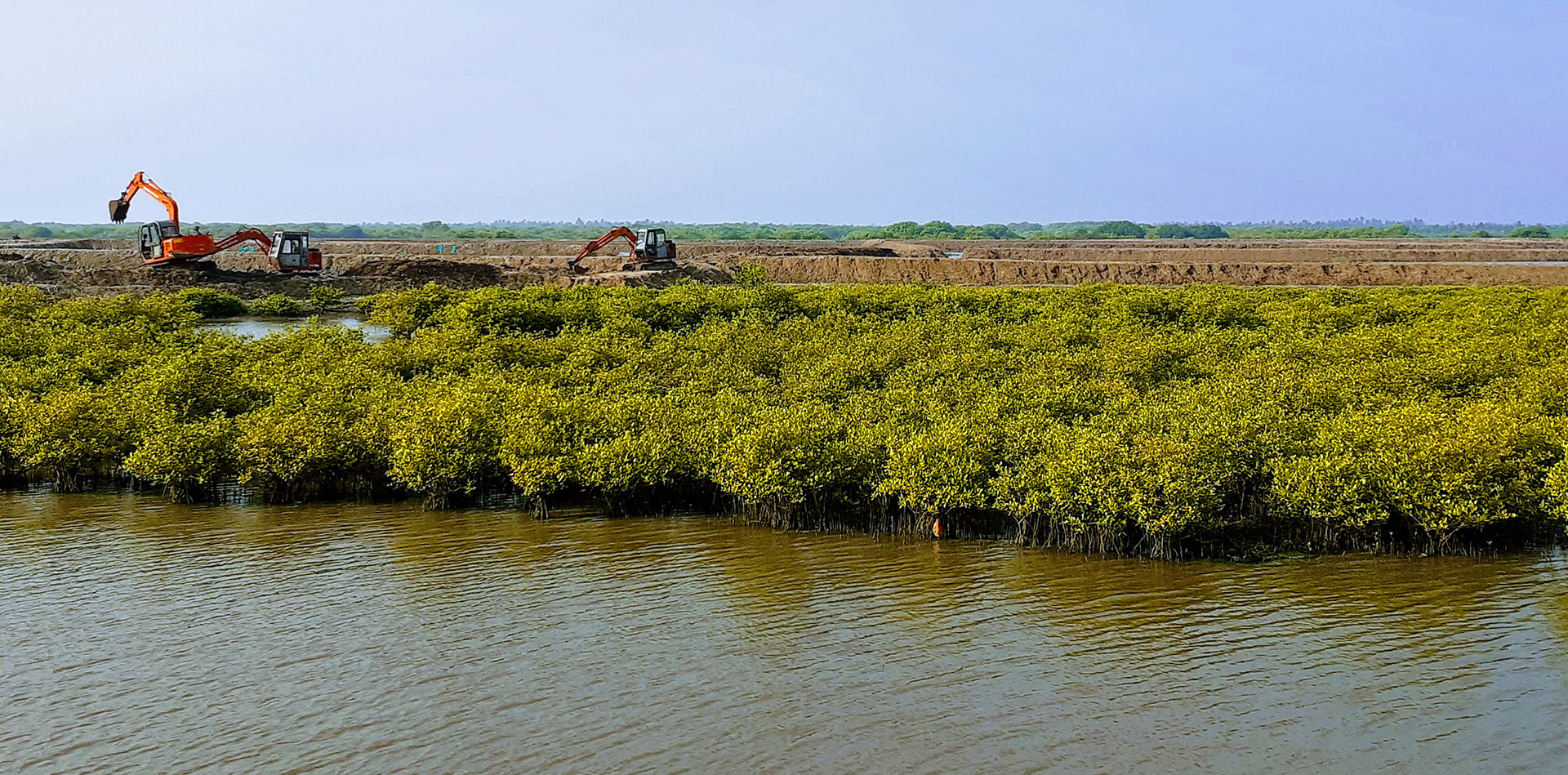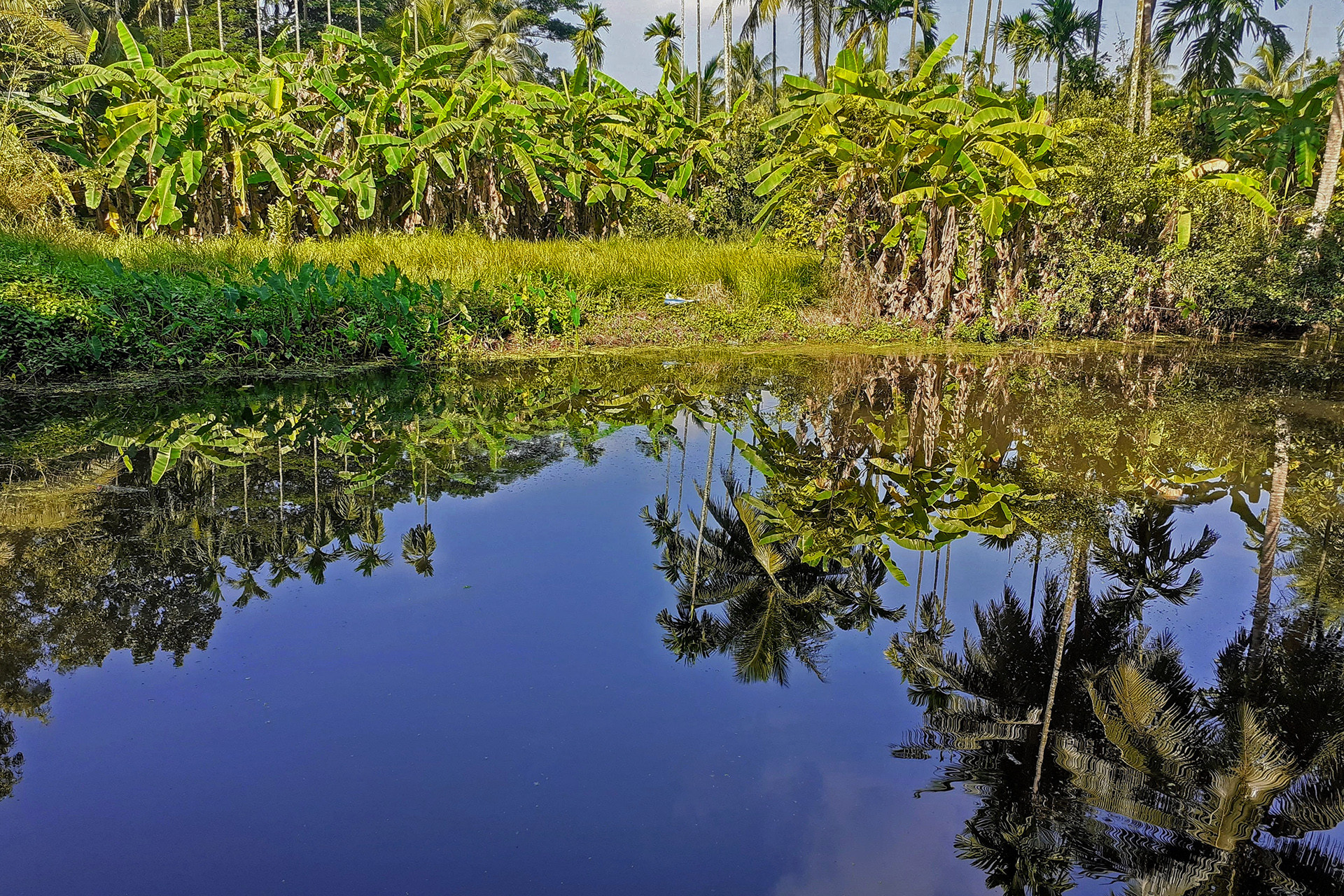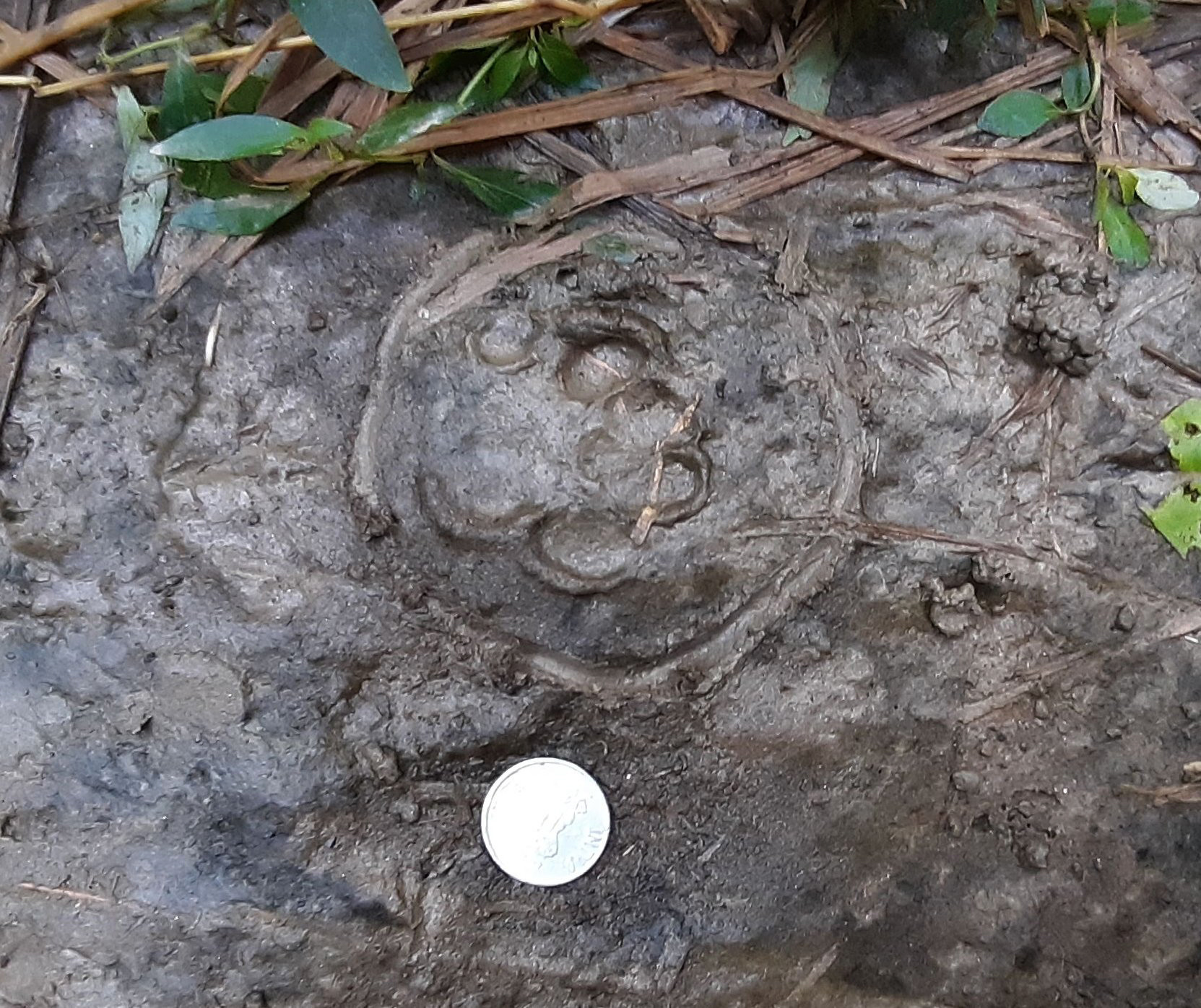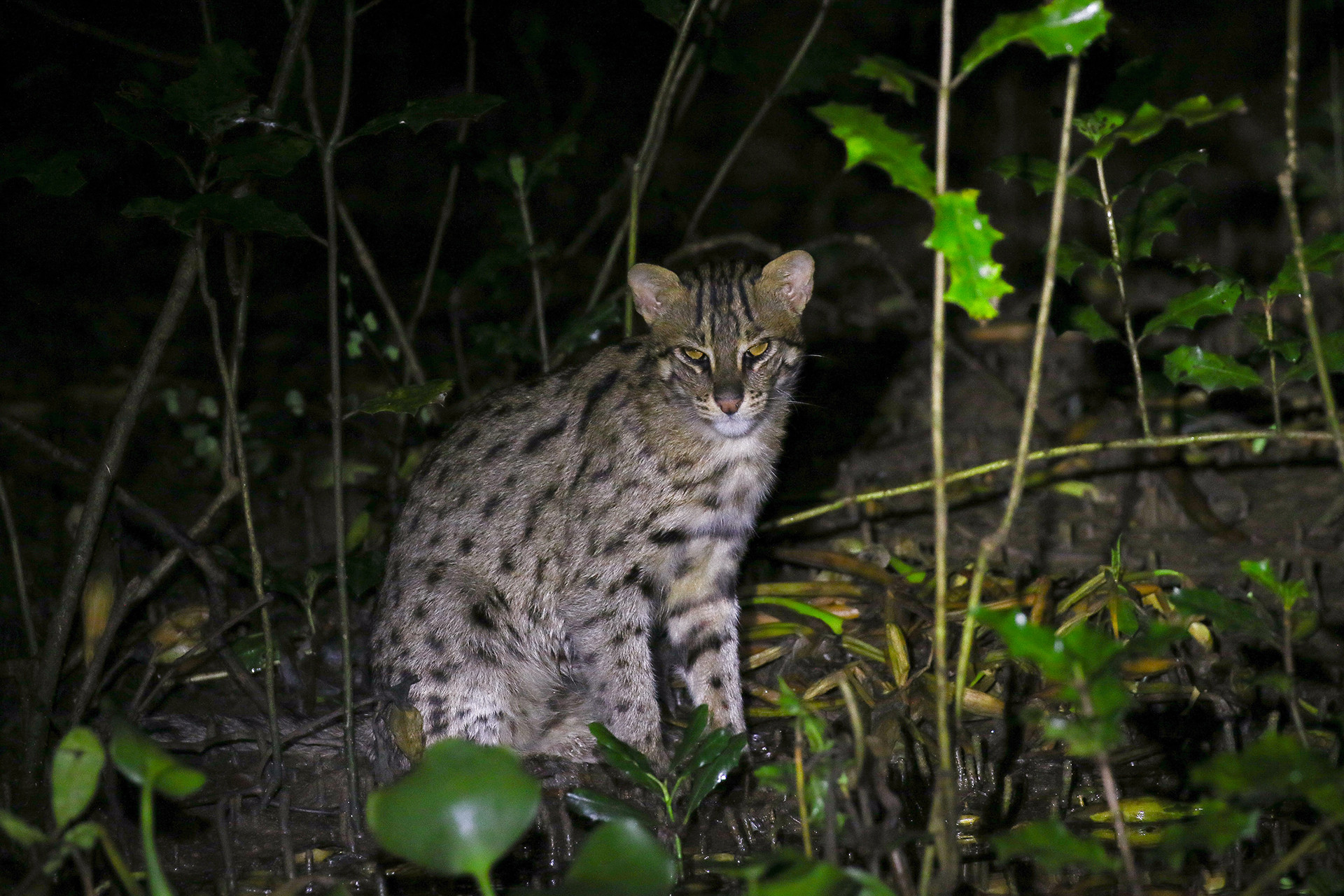Conservation Optimism is a global community dedicated to sharing optimistic stories about conservation and to making people feel empowered to act for nature.
An elusive predator of the Indian wetlands, a cat that loves to get its paws wet for a squishy meal, the marvellous Fishing Cat redefines what it is to be a cat! Though more than double the size of a domestic cat and widely distributed around water bodies along the eastern coast and the floodplains of northern India, the cat remains a mystery. Isolated records from the dry regions of Central India add to this enigma. In fact, much of the information that is available about the species online is dominated by the grim narratives of retaliatory killings. Like many other carnivores, the survival of this species is severely affected by habitat loss and human-wildlife conflict. Hence, with a curious mind, albeit one clouded by morbid tales of killings, I went out with the hope of being a saviour of this uncommon cat species.
The elusive neighbour
My first destination, Amalapuram. A 3-hour drive from Vijayawada, this small town in the East Godavari district of Andhra Pradesh served as my field base to study the Fishing Cat. The Godavari delta is formed by a complex mosaic of large and small mangrove patches interspersed with fishing villages and large aquaculture farms owned by corporations. Walking along the aquaculture bunds lined by remnant mangrove patches, I imagined how Fishing Cats would move around in this environment, hiding in plain sight from humans. "Do the people know that Fishing Cats live in such close proximity?", I enquired. "Of course, they are everywhere!”, my field assistant replied.
The larger and more contiguous mangrove patches of the Pora Reserve Forest were on my survey list for the next day. The calm murky waters of River Godavari lined with a thick wall of mangroves seemed more of an ideal habitat for the cat. Drifting along the river, we soon reached a dendritic network of small water channels capped by fine nets. The fishermen there were quite eager to tell us how these channels were used to trap fish during high tides. As an afterthought, my assistant mentioned that he had often seen Fishing Cats steal from these nets. "What do you do then?", I asked the fisherman with whom we had struck a conversation. To my surprise, he replied with a shrug of his shoulder, "We don't bother. We shoo it away if we see it, otherwise it's fine. What difference do 4-5 fish make?"
Amazed by this flipped narrative, I grew curious to understand the drivers behind it. Marine fish in Amalapuram were small, cheap, and in plenty, and so the loss of a few didn’t matter. High-yielding systems, low initial investments and other available methods of fishing result in insignificant losses to the fishers from stealing Fishing Cats.
"Fishing Cat is never the target species," says Pranav Tamarapalli, a local researcher from Fishing Cat Conservancy, an NGO working on wetland fauna in the region. Though the fishermen hold a nonchalant attitude towards the Fishing Cat, the species often falls prey to electric fences set up to target otters and poaching traps set for Jungle Cats. The loss of habitat is another major threat affecting the survival of Fishing Cats in the Godavari delta.
Days later, as I left this site on a motor boat, looking at the sunset, I thought about how we have an oversimplified the understanding of almost everything, how we forget that context is always key. The larger lesson to be learnt here was that humans and wildlife sharing common spaces does not always result in conflict. Rightly pointed out by Pranav, "In cases like these, the Fishing Cat is just an elusive neighbour".
The backyard thief
Enlightened by this new perspective, I landed at my next destination, the bustling city of joy, Kolkata. My search for the Fishing Cat here, took me 25km away from the city to Dhulagarh in the Howrah district. Riding the busy, noisy local bus to Dhulagarh, my eyes kept searching for the lush green mangrove walls of Amalapuram, but they were nowhere to be seen. Finally, when I got off the bus after an hour-long ride, I was standing beside the NH-6, with a crowded and dusty road leading down to the the village of Dhulagarh. Multiple records based on camera trap images and personal observations were the only factors convincing me of the presence of my study species in the midst of this crowded village. But a kilometre down the winding road I could see how this was true. Unlike the dry landscape of Andhra Pradesh, this densely inhabited place was dotted with small and large ponds. Soon the e-rickshaw took a sharp turn, and the hustle-bustle of the road was left behind.
After meeting up with my local assistants, I was eager to explore this dense mosaic of water bodies and vegetation. Having left the paved road behind, we were now walking on a heavily trodden mud trail, moving across dense vegetation. To my great surprise, amidst the blotches of shoe-prints and cycle tracks was a trail of tiny, round pugmarks. My assistant excitedly circled it and said, "This is Baghrol, the Fishing Cat".
Exciting stories of coexistence from my assistants followed throughout my tour of the village. Jumping across brick-paved roads between water bodies and plantations of paan baruch, I kept smiling. One of my accomplices pointed out a spot frequented by the cat every night, while on another instance, I found scat in the verandah of the home of an old couple.
Just like in Amalapuram, here too, the Fishing Cat was sharing space with locals who were dependent on aquaculture. So why was the cat a villain here and not there? In Howrah, the aquaculture system is very localised. Families are dependent on their small ponds where they invest plenty of time and resources. Every investment bears a huge cost to a small family. Additionally, the Fishing Cat too is dependent on the fish reared in these ponds, more so in the dry season. Each fish can fetch a substantial amount of money, and every fish the cat takes intensifies tensions. Therefore, high investment and large individual losses weave a different story of human-wildlife sympatry here.
These heavy losses turn into gruesome conflicts. A study found that in Howrah alone 27 Fishing Cats were killed in retaliation in a period of seven months. The Fishing Cat in this landscape is bound by an ever-shrinking habitat. Located at the edge of a National Highway, and in close proximity to Kolkata, the lands of Dhulagarh are highly prized by industries. Added to this is the fact that wetlands in the country are often treated as ‘wastelands’, so any investment from industry is deemed good.
Yet, there is light even in the darkest of times. Subhajit Maity, more widely known as Bappa Da in the community has been working with his team to save the wetlands and its inhabitants since the last ten years. Some appreciate his efforts, others mock him; he stands resolute nonetheless. He believes that it is not the wetlands that he is saving, but his own people, for wetlands offer important services such as flood control, groundwater replenishment and much more.
In his experience of ten years, he has seen change stemming from awareness and education campaigns conducted by his team. “The younger generation is our hope”, he says, smiling. “As more people are educated, the Fishing Cat will eventually be realised as our state animal and not just a backyard thief.”
Something to think about
Oversimplified realities and grim narratives often mask the courageous efforts of local conservation heroes. These efforts do not come from a will to be famous or powerful, which is perhaps the reason why many such stories remain unheard. In reality these heroes exist in almost every system – they are people with a will and vision for a better future, and this idea itself is a fountain of hope for the world.
The two tales of a cat are a reminder of how the same players with the same interactions can have totally different outcomes depending on the start and the context of the story. Therefore, to save species and ecosystems, it is important to understand the background of an issue and come up with novel, well-tailored solutions. The daunting complexity of the world can be treated as an infinite loop of opportunities, where there is always time to make things better.
This project was jointly funded by NCBS-TIFR under the Wildlife Biology and Conservation Programme and by Panthera under the Small Cat Action Fund.

